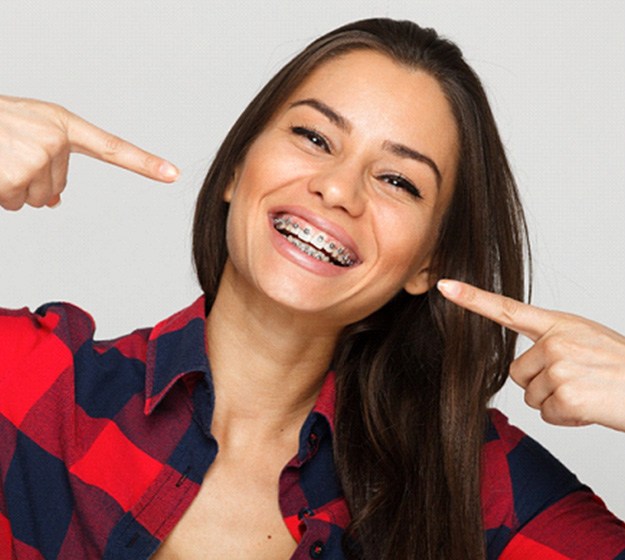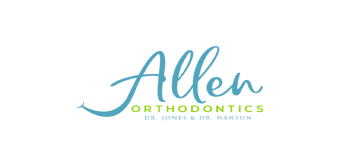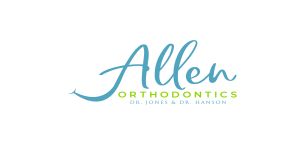Traditional Braces – Allen, TX
Reliable and Effective for Complex Orthodontic Concerns
It doesn’t matter if you have crooked, crowded, or gapped teeth, (or some combination of all three), traditional braces in Allen, TX are one of the most effective treatments to achieve a straight and functional smile. Allen Orthodontics typically recommends them for young patients, but they can be just as helpful for adults with severe concerns. Dr. Jones and Dr. Hanson ensure you can trust your child or your own treatment to be smooth, comfortable, and provide fantastic results. Get started on your new smile today by calling and scheduling your FREE consultation!
Why Choose Allen Orthodontics for Traditional Braces?
- Board-Certified Orthodontist By Your Side
- Friendly Team and Comfortable Orthodontic Office Environment
- In-Network with Almost All PPOs
Braces Basics
Growing up, you likely saw your peers in a classroom wearing braces. Back then, braces were known for being bulky and irritating, but the good news is they are much smaller and subtle today. We attach brackets to each tooth, and use wires placed along the row of teeth to apply slight pressure and shift the teeth into their desired position.
The Benefits of Braces

If you think braces are solely a cosmetic treatment, think again! It’s true that a straight smile is largely seen as more attractive, but that isn’t the only benefit you can expect. Straight teeth also tend to be at lower risk of dental disease!
Crowded or crooked teeth can lead to small, hard-to-clean areas where plaque and bacteria can collect and increase the risk of tooth decay. When teeth are properly aligned, it’s much easier to clean them. This means orthodontics can actually reduce the chances that you’ll develop cavities and gum disease.
Not only do braces help teeth, but they can also work to correct uneven bites. This in turn works to enhance your appearance as well as your oral function. If the bite comes together as it should, certain functions like eating and speaking start to feel more natural and comfortable. It also help prevent stress on the jaw joint, which lead to headaches and chronic jaw, face, neck, shoulder, and even upper back pain.
Finally, braces can be a major confidence booster. If you’re feeling self-conscious about your crooked teeth, it can start to weigh on you, no matter how old you may be. Once the braces come off, your new smile will be revealed! Our team has seen it time and time again when people’s eyes light up as they examine their straight smile. The better you feel about your teeth, the more likely you are to be social and feel comfortable around others, especially new people. This can be incredibly beneficial for both children and adults!
Customizable Brackets

Traditional braces offer an opportunity for you to express yourself a bit through the use of dental rubber bands. These are designed to hold the wires in place and can come in a wide spectrum of colors. We switch them out every few weeks during adjustment/progress appointments. If your child has a favorite color they’d like to make their elastics or have them match the season or their school, we can do that! Adults also have the option for clear or white elastics to help them blend in better with their natural enamel.
Understanding the Cost of Traditional Braces

Because every patient’s smile is unique, there is no one-size-fits-all cost of traditional braces in Allen. Instead, how much you end up paying for orthodontic treatment will depend on several variables. Dr. Jones and Dr. Hanson can outline your treatment costs during your free consultation based on these variables. The following basic information can be helpful in the meantime.
Factors that Affect the Cost of Traditional Braces

In general, the cost of traditional braces can run anywhere between $3,000 to $6,000. Factors that can influence how much you end up paying for braces include:
- Severity of Misalignment – The greater distance your teeth need to move, the longer your treatment will likely take.
- Length of Treatment – Longer treatment time usually goes hand-in-hand with higher treatment costs, as it requires more routine checkups, adjustments, supplies, etc.
- Age – Your teeth grow more firmly set in your jawbone as you age. The older you get, the longer it can take to adjust teeth with braces.
- Number of Follow-Up Appointments – Braces typically need to be adjusted/tightened every two to eight weeks during treatment depending on the patient’s progress and needs.
- Other Orthodontic Devices/Appliances – Most patients with braces also need to wear – and pay for – other supplies, such as space maintainers, palatal expanders, elastics, headgear, and retainers.
- Your Commitment – Closely following your treatment plan can help keep your costs in line. If, for example, you need to wear rubber bands on your braces, but you fail to do so often enough, your teeth won’t move as planned. Therefore, your treatment will probably take longer.
Professional Braces vs. "DIY" Braces: Which Costs More?

In recent years, some people have been attempting to straighten their teeth on their own using various household or over-the-counter objects. Fishing lines, superglue, rubber bands, paper clips, dental floss, and hair elastics have all been experimented with as “DIY” braces material. These solutions may seem like a low-cost shortcut, but they can spell disaster for your smile and your wallet in the long run.
Wearing braces that aren’t designed by a professional can damage your teeth, gums, and jawbone. Many of the materials used in homemade braces can cut into your gum tissue, creating sores that increase the risk of infection. In the worst-case scenario, your teeth and gums might become so damaged that you end up losing one or more of your teeth!
This is just one of many nightmare scenarios that can be caused by DIY braces. By seeing your orthodontist for traditional braces from the start, you can avoid major headaches (and toothaches!) later on.
Does Dental Insurance Cover Braces?

Not all dental insurance plans include coverage for orthodontic treatment. Many only cover braces for patients who are under the age of 18. For insurance plans include orthodontic coverage, they usually cover up to 50% of the cost of traditional braces. Dental insurance may be more likely to cover your braces if you need them for medical reasons rather than just fixing aesthetic issues. Finally, if you have a Health Savings Account (HSA) or a Flexible Spending Account (FSA), you may be able to use those to partially pay for your treatment. Sound complicated? Our team can help! We will work to ensure you understand the details of your insurance plan and maximize your benefits.
Options for Making Braces Affordable

At Allen Orthodontics, we believe that high-quality braces do not have to mean expensive out-of-pocket costs. That is why we provide interest-free monthly payment plans. Instead of paying for treatment in one lump sum, you can break up the cost of traditional braces in Allen into smaller, monthly installments. This is great option for fitting traditional braces into almost any budget! Ask our team for more details.
Traditional Braces FAQs

Braces have been around for a long time, and just about everyone knows someone who had to wear them at some point. This means that most people have some idea about what wearing braces entails.
However, all this word-of-mouth may do more harm than good, giving people incorrect or outdated ideas about the treatment. You may even be more confused about braces than if you didn’t know anything at all.
If you want a little bit of clarity, here are answers to some of the most common questions that people have about traditional braces.
How Long Do Traditional Braces Take?
Traditional braces can vary quite a bit in how long they take to completely fix someone’s smile. Typically treatment can be completed in somewhere between one and three years.
There are several factors that can affect that timeframe, for example the age of the patient. Older people’s teeth are more deeply ingrained, which makes them harder to move. It’s also true that the severity of your misalignment has a lot to do with the length of the treatment, as will compliance with treatment guidelines.
Do Traditional Braces Hurt?
Immediately after you get your braces, it’s common to be a little bit sore until your teeth get used to moving. This should only be the case for around a week, so be sure to make proper use of OTC pain relievers until you feel better.
After that, you should only feel a little bit of discomfort when you get your braces tightened, and then only for a day or so. Occasionally, you may also find that your brackets rub against the soft tissue in your mouth, so be sure to keep dental wax on hand in case that happens.
Can You Drink Coffee with Traditional Braces?
Technically, coffee isn’t going to do serious damage to your braces, which means it’s not something you need to avoid religiously. However, as you may know, coffee is famous for staining just about everything that it comes in contact with, especially teeth.
If your teeth become heavily discolored while you’re wearing braces, you’ll have a small light spot in the center of your tooth once the braces come off, like a tan line on your smile. For that reason, you may still want to take it easy on coffee or drink it with a straw so that it comes in less contact with the teeth.
Why Do My Teeth Feel Loose with Braces?
One of the things that catches people off-guard when they start wearing braces is that their teeth start to feel kind of “loose” or “floaty.” This often leads people to think that something is wrong with their smile, when the fact is that it’s actually completely normal.
For braces to move your teeth, the ligaments that connect your teeth to your jaw need to stretch, which can cause the teeth to feel like they aren’t secure. Thankfully, there’s no danger of your teeth actually falling out, and they should return back to normal once you take your braces off.

